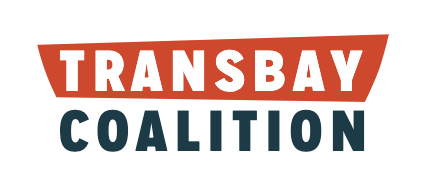
Read on for more information about ways that VTA is planning to speed up buses, and how you can help. The meeting on February 5th was the first step in a campaign to support bus speedups – if you’d like to participate, sign this Santa Clara County petition and this San Mateo County petition, and we’ll reach out to you with opportunities.
Why slower buses are really bad, and how to speed them up
Between 1988-2016, VTA average bus speeds have decreased by 20%. This slowdown reflects an increase in traffic congestion before Covid and illustrates how high car-use is an equity issue by slowing down transit for lower income transit riders. When bus speeds slow down, VTA has to allocate more resources (i.e. buses/drivers) to operate the same amount of service, decreasing the amount of service it can operate with the same amount of funds. Coupled with disinvestment in transit, this relationship between bus speeds and service levels has created a vicious cycle that harms those most dependent on transit in Santa Clara County.
While this is a grim picture, the vicious cycle hints at a simple solution: if slower speeds means less potential service, then faster bus speeds would allow VTA to operate more service with the same resources. More frequent service and increased reliability drives up ridership, reducing congestion, allowing for even faster bus speeds, even further helping those who are dependent on the bus.
VTA’s fast transit program used this concept as the basis for its resultant transit speed policy, adopted in 2019, and went on to study the agency’s declining speed and reliability.
Currently, VTA’s buses spend 15% of their time stopped at signals, 17% stopped in traffic, 29% of time spent dwelling at bus stops, and only 39% of their time in motion. VTA is looking at transit signal priority (TSP) to reduce time stopped at signals, bus stop balancing and expedited boarding to reduce dwell times, and eventually at quick-build bus lanes to reduce time spent in traffic. While VTA is working closely with local governments, infrastructure changes such as quick-build bus lanes will require public support to pressure local politicians to advocate for transit users.
Transit Signal Priority (TSP)
TSP provides transit with priority at a signal, reducing the amount of time spent waiting at intersections. TSP requires intersections and transit vehicles to be equipped with communication technologies because intersections must know when a transit vehicle is approaching. Then it can prioritize the transit vehicle’s passage through the intersection, either by extending a green light or shortening the time of the red light.
TSP is different from signal preemption. Signal preemption immediately interrupts the cycle in progress to almost completely eliminate the bus wait time; in other words, if a bus approaches a red light, the red light will immediately be triggered in all other directions, meaning that the bus’ light will turn green as soon as possible. While preemption would result in lower transit dwell times, VTA is not considering it at this time due to larger impacts at the intersection. Signal preemption might be something to push VTA on, since it seems that an anticipated backlash from drivers is the worry here, as opposed to safety.
Regardless of whether preemption or signal priority is pursued, VTA needs support from the public as it collaborates with cities, given that they control their intersections.
Bus stop balancing and all-door boarding
To reduce bus stop dwell times, VTA is engaging in a bus stop rebalancing project to identify how to better space out its bus stops without reducing ridership or making people walk too far, while also reducing the number of times that the bus stops. Additionally, reducing boarding times is a crucial step to reducing dwell times. It takes on average 2 seconds to board with clipper, versus 15 seconds to board with cash. About 20% of frequent network fares are paid with cash. Expanding clipper use to this group would reduce boarding times. Furthermore, in response to the pandemic, VTA moved to rear-door boarding and paused fare collection. Moving to all-door boarding post-pandemic will help reduce boarding times, and public support is necessary to push VTA in this direction.
Quick-build bus lanes
While VTA has not developed a specific program for iterating quick-build bus lanes, the agency has articulated its desire to put transit infrastructure on the ground quickly, and use the benefits garnered from quick build bus lanes to gain support for longer term transit projects along the way. VTA is currently researching the feasibility of peak hour bus lanes that are bike lanes/parking lanes in other hours. VTA is currently looking at shorter segments, i.e. adding bus lanes at problem intersections.
Summary & Action
The travel time savings from all of these proposed improvements would be cumulative. For example, on Stevens Creek boulevard, peak-hour bus lanes added to faster boarding and transit signal priority could get 25% travel time savings, a vast improvement that requires local cooperation with VTA.
VTA has tried to speed up bus service before but received opposition. However, given shifting political winds and a greater focus on equity in transportation, now is an opportunity to work with local governments in Santa Clara County to adopt transit-first/faster transit policies and work with VTA to implement quick-build bus lanes and transit signal priority, among other reforms.
There will be upcoming advocacy meetings and opportunities to influence cities in the faster bus direction. Sign onto these petitions to stay in touch on initiatives in Santa Clara County and San Mateo County.
